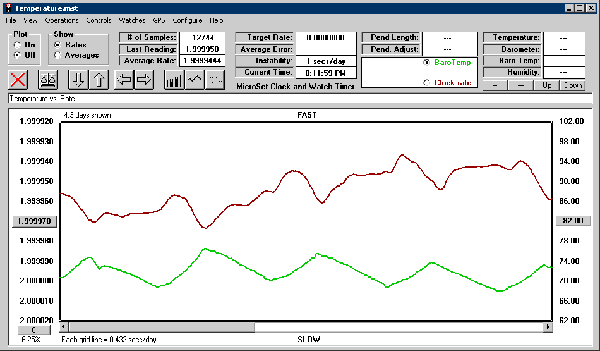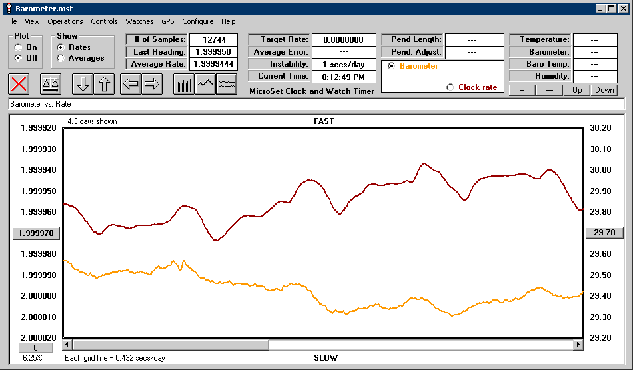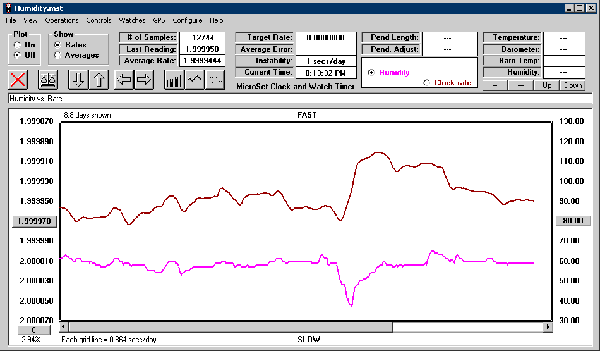Measuring atmospheric conditions
Serious study of clock performance also requires the measurement of environmental factors that effect the timepiece. We now make an Atmospheric Sensor that can record temperature, barometric pressure, and humidity with the Windows interface software.
Measuring temperature
Being able to log the temperature and rate simultaneously allows you to measure the temperature compensation of a clock or watch.
In this graph you can see the thermal behavior of a Standard Electric master clock. The top red line records the rate of the pendulum, the bottom green line records the temperature. It’s easy to see that, over the four days shown, the clock slows down every time the temperature rises. This clock has a wooden pendulum rod and a lenticular brass bob.
For these measurements it’s important that the timer itself be immune to temperature effects by having a temperature compensated timebase or using a GPS reference signal.
Measuring barometric pressure
Barometric pressure is also commonly recorded as an environmental factor of clock rate. The barometer doesn’t change much in Santa Barbara, where we live, so I’m not able to get very dramatic data. In this graph we may may see a correlation between the barometer, shown at the bottom in orange, and rate shown in red, at the top. The rate seems to increase slightly as the barometer falls.
Measuring humidity
Humidity is also considered as an environmental factor of clock rate. It’s known to effect the rate of wooden pendulums, and Evan Edwards has recorded the effect of humidity on carbon fiber rods. This graph shows a strong correlation between the humidity and rate. A dramatic drop in humidity, represented by the purple line at the bottom, is followed by a dramatic rise in the rate, represented by the red line at the top. This rate change follows the humidity change by about two hours in this graph, which spans nine days. Higher humidity causes the wooden pendulum rod to grow longer, slowing down the clock.
Viewing all parameters
For a comparative analysis, all four readings can be viewed simultaneously.



